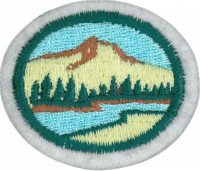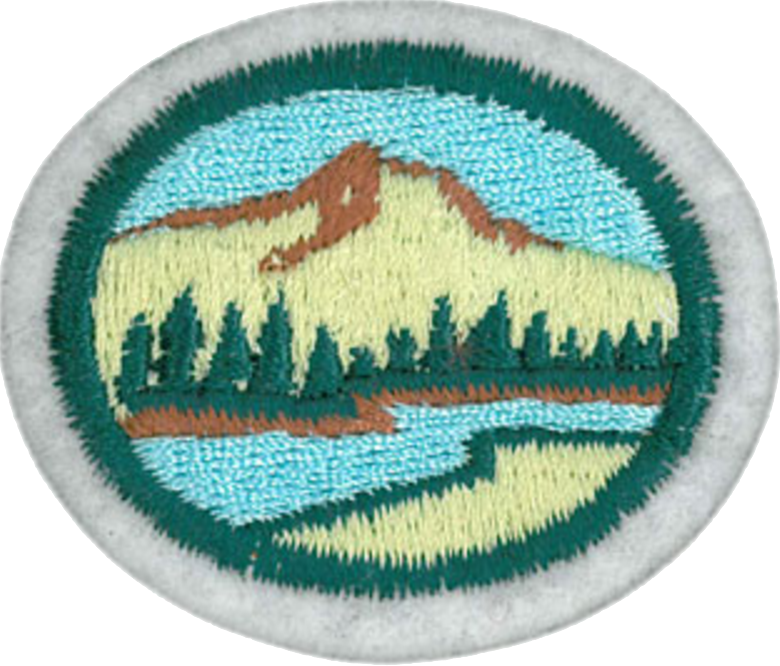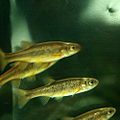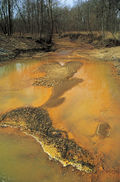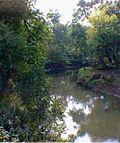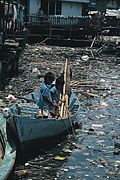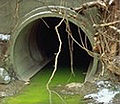Difference between revisions of "AY Honors/Environmental Conservation/Answer Key"
(/* 5. If your stream is showing some of the above signs of death, do something about cleaning it up. Contact the closest government agency to ask what you and/or your group can do to help improve the) |
m (- Category of AYHAB) |
||
| (46 intermediate revisions by 5 users not shown) | |||
| Line 1: | Line 1: | ||
| − | {{ | + | {{HonorSubpage}} |
| − | + | <section begin="Body" /> | |
| − | + | {{ansreq|page={{#titleparts:{{PAGENAME}}|2|1}}|num=1}} | |
| − | + | <noinclude><translate><!--T:27--> | |
| + | </noinclude> | ||
| + | <!-- 1. What is the difference between ecology and environmental conservation? --> | ||
;Ecology: Is defined as "the study of how organisms interact with each other and their physical environment." | ;Ecology: Is defined as "the study of how organisms interact with each other and their physical environment." | ||
| − | ;Environmental conservation: Is defined as "the rational use of the environment to provide the | + | ;Environmental conservation: Is defined as "the rational use of the environment to provide the highest sustainable quality of living for humanity." |
| − | ==2. Write a 500 word essay on how the increase in human population is threatening our existence on earth. | + | <!--T:28--> |
| − | + | <noinclude></translate></noinclude> | |
| + | {{CloseReq}} <!-- 1 --> | ||
| + | {{ansreq|page={{#titleparts:{{PAGENAME}}|2|1}}|num=2}} | ||
| + | <noinclude><translate><!--T:29--> | ||
| + | </noinclude> | ||
| + | <!-- 2. Write a 500 word essay on how the increase in human population is threatening our existence on earth. --> | ||
| + | An important threat to our existence on earth today is that of climate change, which is the result of sin, mostly in the form of human greed. The human activity that has the greatest effect on warming is the release of greenhouse gases such as C0<sub>2</sub>. For your research into this issue, see the following Wikipedia articles: | ||
| + | <!--T:3--> | ||
* [[w:Global warming|Global warming]] | * [[w:Global warming|Global warming]] | ||
* [[w:Greenhouse effect|Greenhouse effect]] | * [[w:Greenhouse effect|Greenhouse effect]] | ||
| Line 14: | Line 23: | ||
* [[w:Carbon offset|Carbon offset]] | * [[w:Carbon offset|Carbon offset]] | ||
| − | Other factors include [[w:Overpopulation|Overpopulation]] and [[w:Deforestation|Deforestation]]. | + | <!--T:4--> |
| + | Other factors include [[w:Overpopulation|Overpopulation]] and [[w:Deforestation|Deforestation]]. | ||
| − | + | <!--T:5--> | |
| − | + | God put several natural systems in place to sustain life on Earth including oceanic, atmospheric, fresh water, climate, and food production. As the result of human sin, all of these systems are rapidly decaying and have now reached the point of collapse. | |
| + | <!--T:6--> | ||
| + | Thus we see a tremendous increase in the frequency of natural disasters (100 year floods every year, hurricanes of unprecedented size, droughts, etc). We can also observe crop failures which result in food shortages. First world countries are largely insulated from the effects of these food shortages, but the impact is very real on poorer countries. For example, these food shortages are largely responsible for the "Arab Spring." People in the Middle East have lived under the rule of oppressive regimes for decades. It was only as a result of food price spikes that social upheaval was unleashed, followed quickly by the fall of governments all over the region (Tunisia, Egypt, Libya, Yemen), as well as the civil war in Syria. | ||
| + | |||
| + | <!--T:7--> | ||
| + | We are seeing a fulfillment of Matthew 24:6-8 today. <ref name=planet_in_distress>[http://www.amazon.com/Planet-Distress-Environmental-Deterioration-Controversy/dp/0828026602 Planet in Distress], by [http://planetindistress.com/ Scott Christiansen]</ref> | ||
| + | |||
| + | <!--T:30--> | ||
| + | <noinclude></translate></noinclude> | ||
| + | {{CloseReq}} <!-- 2 --> | ||
| + | {{ansreq|page={{#titleparts:{{PAGENAME}}|2|1}}|num=3}} | ||
| + | <noinclude><translate><!--T:31--> | ||
| + | </noinclude> | ||
| + | <!-- 3. What does the term “death” of a lake or river mean? Is there a lake or river in your area or country which is classified as “dead”? --> | ||
| + | The death of a lake or river is said to occur when it becomes so polluted that it can no longer support life (such as fish, turtles, crustaceans, etc.). The most famous dead river is probably the Cuyahoga River in Ohio which actually caught on fire many times, helping to spur the environmental movement in the late 1960s. | ||
| + | |||
| + | <!--T:9--> | ||
Fires plagued the Cuyahoga beginning in 1936 when a spark from a blow torch ignited floating debris and oils. Fires erupted on the river several more times before June 22, 1969, when a river fire captured the attention of Time magazine, which described the Cuyahoga as the river that "oozes rather than flows" and in which a person "does not drown but decays." | Fires plagued the Cuyahoga beginning in 1936 when a spark from a blow torch ignited floating debris and oils. Fires erupted on the river several more times before June 22, 1969, when a river fire captured the attention of Time magazine, which described the Cuyahoga as the river that "oozes rather than flows" and in which a person "does not drown but decays." | ||
| + | <!--T:10--> | ||
This event helped spur an avalanche of pollution control activities resulting in the Clean Water Act, Great Lakes Water Quality Agreement, and the creation of the federal and state Environmental Protection Agency. As a result, large point sources of pollution on the Cuyahoga have received significant attention from the Ohio Environmental Protection Agency in recent decades. | This event helped spur an avalanche of pollution control activities resulting in the Clean Water Act, Great Lakes Water Quality Agreement, and the creation of the federal and state Environmental Protection Agency. As a result, large point sources of pollution on the Cuyahoga have received significant attention from the Ohio Environmental Protection Agency in recent decades. | ||
| + | <!--T:11--> | ||
Water quality has improved and, in recognition of this improvement, the Cuyahoga River was designated as one of 14 American Heritage Rivers in 1998. Pollution remains, however, including nonpoint source problems, Combined Sewer Overflows (CSOs), and stagnation due to water impounded by dams. For this reason, the Environmental Protection Agency classified portions of the Cuyahoga River Watershed as one of 43 Great Lakes Areas of Concern. | Water quality has improved and, in recognition of this improvement, the Cuyahoga River was designated as one of 14 American Heritage Rivers in 1998. Pollution remains, however, including nonpoint source problems, Combined Sewer Overflows (CSOs), and stagnation due to water impounded by dams. For this reason, the Environmental Protection Agency classified portions of the Cuyahoga River Watershed as one of 43 Great Lakes Areas of Concern. | ||
| − | ==4. Carry out a stream investigation of a small stream flowing through or near your home town. Check for the following: == | + | <!--T:32--> |
| − | + | <noinclude></translate></noinclude> | |
| + | {{CloseReq}} <!-- 3 --> | ||
| + | {{ansreq|page={{#titleparts:{{PAGENAME}}|2|1}}|num=4}} | ||
| + | <noinclude><translate><!--T:33--> | ||
| + | </noinclude> | ||
| + | <!-- 4. Carry out a stream investigation of a small stream flowing through or near your home town. Check for the following: --> | ||
| + | <noinclude></translate></noinclude> | ||
| + | {{ansreq|page={{#titleparts:{{PAGENAME}}|2|1}}|num=4a}} | ||
| + | <noinclude><translate><!--T:34--> | ||
| + | </noinclude> | ||
<gallery> | <gallery> | ||
| − | + | File:Phoxinus percnurus sachalinensis by OpenCage.jpg|'''(1) Abundance of small fish present''' | |
| − | + | File:Mountain stream.jpg|'''(2) Water visually clear and fresh smelling''' | |
| − | + | File:Pleasant Stream.JPG|'''(3) Stream banks covered with vegetation down to water's edge.''' | |
| − | + | File:Kziv stream.JPG|'''(4) Small amounts of green algae in water (light green in color)''' | |
| − | + | File:Typha latifolia 02 bgiu.jpg|'''(5) Some aquatic plants present, such as cattails, arrow-leaf, or pickerel weed. ''' | |
| − | + | File:Australsnturtle2.jpg|'''(6) Turtles present in the stream''' | |
| − | + | File:Crayfish.jpg|'''(7) Crayfish under stones in the stream''' | |
| − | + | File:Hagmolenbeek.jpg|'''(8) Sandbars covered with growing weeds indicating relatively stable water level''' | |
</gallery> | </gallery> | ||
| − | == | + | |
| + | <!--T:35--> | ||
| + | <noinclude></translate></noinclude> | ||
| + | {{CloseReq}} <!-- 4a --> | ||
| + | {{ansreq|page={{#titleparts:{{PAGENAME}}|2|1}}|num=4b}} <!--T:13--> | ||
| + | <noinclude><translate><!--T:36--> | ||
| + | </noinclude> | ||
<gallery> | <gallery> | ||
Image:Algues eau douce.jpg|'''(1) Large masses of blue-green algae present (dark green in color)''' | Image:Algues eau douce.jpg|'''(1) Large masses of blue-green algae present (dark green in color)''' | ||
| Line 47: | Line 90: | ||
Image:Sivadeule travaux juin 2001Gabions.jpg|'''(7) No aquatic insects or fish present''' | Image:Sivadeule travaux juin 2001Gabions.jpg|'''(7) No aquatic insects or fish present''' | ||
Image:Obvious water pollution.jpeg|'''(8) Presence of raw sewage''' | Image:Obvious water pollution.jpeg|'''(8) Presence of raw sewage''' | ||
| − | Image: | + | Image:Oil sheen on pond.jpg|'''(9) Presence of oil on the surface of the water''' |
Image:Triturus vulgaris.jpg|'''(10) No salamanders or frogs under rocks along stream bank''' | Image:Triturus vulgaris.jpg|'''(10) No salamanders or frogs under rocks along stream bank''' | ||
Image:Water pollution.jpg|'''(11) Stores or small factories dumping their wastes into the stream''' | Image:Water pollution.jpg|'''(11) Stores or small factories dumping their wastes into the stream''' | ||
</gallery> | </gallery> | ||
| − | ==5. If your stream is showing some of the above signs of death, do something about cleaning it up. Contact the closest government agency to ask what you and/or your group can do to help improve the stream. Organize a group of young people to help in cleaning the trash along your stream. If possible, get businesses to help in your campaign. | + | <!--T:37--> |
| − | In the United States, environmental protection is managed by the government at all levels: local, state, and federal. | + | <noinclude></translate></noinclude> |
| + | {{CloseReq}} <!-- 4b --> | ||
| + | {{CloseReq}} <!-- 4 --> | ||
| + | {{ansreq|page={{#titleparts:{{PAGENAME}}|2|1}}|num=5}} | ||
| + | <noinclude><translate><!--T:38--> | ||
| + | </noinclude> | ||
| + | <!-- 5. If your stream is showing some of the above signs of death, do something about cleaning it up. Contact the closest government agency to ask what you and/or your group can do to help improve the stream. Organize a group of young people to help in cleaning the trash along your stream. If possible, get businesses to help in your campaign. --> | ||
| + | In the United States, environmental protection is managed by the government at all levels: local, state, and federal. It will be much easier to contact local or state officials rather than federal officials. Check the phone directory under "Environmental Protection" or search the Internet to find contact information for the agency in your area. If you are having difficulty finding the government body responsible for this in your area, try contacting a local paddling club, [http://www.americancanoe.org/ The American Canoe Association], or [http://www.americanwhitewater.org/ American Whitewater]. These associations have a vested interest in clean rivers and streams (that's their playground!) and often organize river clean-up projects. They will be able to get you on a project, put you in touch with the most responsive government body, and recommend local businesses that are responsive to environmental conservation. You might also host a CITO event through Geocaching.com. A well organized CITO will attract lots of willing volunteers. | ||
| + | |||
| + | <!--T:39--> | ||
| + | <noinclude></translate></noinclude> | ||
| + | {{CloseReq}} <!-- 5 --> | ||
| + | {{ansreq|page={{#titleparts:{{PAGENAME}}|2|1}}|num=6}} | ||
| + | <noinclude><translate><!--T:40--> | ||
| + | </noinclude> | ||
| + | <!-- 6. Make a visit to the city or county trash dump to see how this waste is handled. Find out the following: <br>a. How many tons of trash are dumped daily? Yearly? <br>b. What attempts are made to recycle any of this trash? <br>c. Is any of the trash burned or is all of it buried? <br>d. What is the cost per person per year for handling the trash? <br>e. What happens to junked autos in your area? --> | ||
| + | Once you have made contact with the local government, they will be able to tell you how to get in touch with the solid waste management authority (if you don't know already). It could be that the government body you have been working with is the same one responsible for solid waste management. If this is the case, you previous efforts with them will pay another dividend - they will be eager to arrange a visit. You may also opt to contact the dump facility yourself and make arrangements for your visit. | ||
| + | |||
| + | <!--T:16--> | ||
| + | This requirement overlaps a requirement in the [[AY Honors/Ecology|Ecology]] honor. Working the honors together makes a lot of sense, and both count toward the [[:AY Honors/Conservation Master Award|Conservation Master Award]] | ||
| + | |||
| + | <!--T:41--> | ||
| + | <noinclude></translate></noinclude> | ||
| + | {{CloseReq}} <!-- 6 --> | ||
| + | {{ansreq|page={{#titleparts:{{PAGENAME}}|2|1}}|num=7}} | ||
| + | <noinclude><translate><!--T:42--> | ||
| + | </noinclude> | ||
| + | <!-- 7. Make a visit to the nearest sewage plant. Draw and label a detailed diagram of what happens to the liquid and solid wastes from the time they come into the plant until they leave. In what form do they leave? Is any further use made of this waste? --> | ||
| + | Again, you have an opportunity to use the contact you established with the local government. In most municipalities, the department responsible for the sewage plant is the same as the one responsible for the water plant. Make arrangement for both visits (see requirement 8) at the same time. Make sure to bring paper, pencil, and clipboards, and let the plant manager know ahead of time what questions you will be asking so that they can prepare. | ||
| + | |||
| + | <!--T:43--> | ||
| + | <noinclude></translate></noinclude> | ||
| + | {{CloseReq}} <!-- 7 --> | ||
| + | {{ansreq|page={{#titleparts:{{PAGENAME}}|2|1}}|num=8}} | ||
| + | <noinclude><translate><!--T:44--> | ||
| + | </noinclude> | ||
| + | <!-- 8. Visit the nearest water purification plant. Construct a flow diagram of the steps in water purification from the time the water enters the plant until it leaves for distribution to homes and stores. Through reading and discussion with water works officials, determine whether water resources in the future are going to be enough to meet the demand. --> | ||
| + | See the answers to requirement 7 for more information. | ||
| − | == | + | <!--T:45--> |
| + | <noinclude></translate></noinclude> | ||
| + | {{CloseReq}} <!-- 8 --> | ||
| + | {{ansreq|page={{#titleparts:{{PAGENAME}}|2|1}}|num=9}} | ||
| + | <noinclude><translate><!--T:46--> | ||
| + | </noinclude> | ||
| + | <!-- 9. Read and write a book report on an environment issues book such as Rachel Carson's Silent Spring. --> | ||
| + | [http://www.amazon.com/Silent-Spring-Rachel-Carson/dp/0618249060/ref=pd_bbs_sr_1?ie=UTF8&s=books&qid=1202522048&sr=8-1 Silent Spring] is a book written by Rachel Carson and published by Houghton Mifflin in September 1962. The book is widely credited with helping launch the environmental movement in the West. | ||
| − | + | <!--T:20--> | |
| + | When Silent Spring was published, Rachel Carson was already a well-known writer on natural history, but had not previously been a social critic. The book was widely read (especially after its selection by the Book-of-the-Month Club and an endorsement by Supreme Court Justice William O. Douglas), spending several weeks on the New York Times best-seller list, and inspired widespread public concerns with pesticides and pollution of the environment. Silent Spring facilitated the ban of the pesticide DDT in 1972 in the United States. | ||
| − | + | <!--T:21--> | |
| + | The book documented detrimental effects of pesticides on the environment, particularly on birds. Carson said that DDT had been found to cause thinner egg shells and result in reproductive problems and death. She also accused the chemical industry of spreading disinformation, and public officials of accepting industry claims uncritically. | ||
| − | + | <!--T:22--> | |
| − | + | The book stated that uncontrolled pesticide use led to the deaths of not only animals, especially birds, but also humans. Its title was meant to evoke a spring season in which no bird songs could be heard, because they had all died from pesticides. Its title was inspired by a poem by John Keats, "La Belle Dame sans Merci", which contained the lines "The sedge is wither'd from the lake, And no birds sing." | |
| − | |||
| − | == | + | <!--T:47--> |
| + | <noinclude></translate></noinclude> | ||
| + | {{CloseReq}} <!-- 9 --> | ||
| + | {{ansreq|page={{#titleparts:{{PAGENAME}}|2|1}}|num=10}} | ||
| + | <noinclude><translate><!--T:48--> | ||
| + | </noinclude> | ||
| + | <!-- 10. What are rare and endangered species? Determine what efforts are being put forth to protect such species in your area. What can you do to help? Write a 300-500 word paper on your ideas. --> | ||
| + | See the [[AY Honors/Endangered Species|Endangered Species]] honor for information on this requirement. | ||
| − | + | <!--T:49--> | |
| + | <noinclude></translate></noinclude> | ||
| + | {{CloseReq}} <!-- 10 --> | ||
| + | <noinclude><translate></noinclude> | ||
| + | ==References== <!--T:24--> | ||
| + | <references/> | ||
| + | <noinclude></translate></noinclude> | ||
| + | {{CloseHonorPage}} | ||
Latest revision as of 16:25, 14 July 2022
Skill Level
2
Year
1973
Version
31.12.2025
Approval authority
General Conference
1
- Ecology
- Is defined as "the study of how organisms interact with each other and their physical environment."
- Environmental conservation
- Is defined as "the rational use of the environment to provide the highest sustainable quality of living for humanity."
2
An important threat to our existence on earth today is that of climate change, which is the result of sin, mostly in the form of human greed. The human activity that has the greatest effect on warming is the release of greenhouse gases such as C02. For your research into this issue, see the following Wikipedia articles:
Other factors include Overpopulation and Deforestation.
God put several natural systems in place to sustain life on Earth including oceanic, atmospheric, fresh water, climate, and food production. As the result of human sin, all of these systems are rapidly decaying and have now reached the point of collapse.
Thus we see a tremendous increase in the frequency of natural disasters (100 year floods every year, hurricanes of unprecedented size, droughts, etc). We can also observe crop failures which result in food shortages. First world countries are largely insulated from the effects of these food shortages, but the impact is very real on poorer countries. For example, these food shortages are largely responsible for the "Arab Spring." People in the Middle East have lived under the rule of oppressive regimes for decades. It was only as a result of food price spikes that social upheaval was unleashed, followed quickly by the fall of governments all over the region (Tunisia, Egypt, Libya, Yemen), as well as the civil war in Syria.
We are seeing a fulfillment of Matthew 24:6-8 today. &
3
The death of a lake or river is said to occur when it becomes so polluted that it can no longer support life (such as fish, turtles, crustaceans, etc.). The most famous dead river is probably the Cuyahoga River in Ohio which actually caught on fire many times, helping to spur the environmental movement in the late 1960s.
Fires plagued the Cuyahoga beginning in 1936 when a spark from a blow torch ignited floating debris and oils. Fires erupted on the river several more times before June 22, 1969, when a river fire captured the attention of Time magazine, which described the Cuyahoga as the river that "oozes rather than flows" and in which a person "does not drown but decays."
This event helped spur an avalanche of pollution control activities resulting in the Clean Water Act, Great Lakes Water Quality Agreement, and the creation of the federal and state Environmental Protection Agency. As a result, large point sources of pollution on the Cuyahoga have received significant attention from the Ohio Environmental Protection Agency in recent decades.
Water quality has improved and, in recognition of this improvement, the Cuyahoga River was designated as one of 14 American Heritage Rivers in 1998. Pollution remains, however, including nonpoint source problems, Combined Sewer Overflows (CSOs), and stagnation due to water impounded by dams. For this reason, the Environmental Protection Agency classified portions of the Cuyahoga River Watershed as one of 43 Great Lakes Areas of Concern.
4
4a
4b
5
In the United States, environmental protection is managed by the government at all levels: local, state, and federal. It will be much easier to contact local or state officials rather than federal officials. Check the phone directory under "Environmental Protection" or search the Internet to find contact information for the agency in your area. If you are having difficulty finding the government body responsible for this in your area, try contacting a local paddling club, The American Canoe Association, or American Whitewater. These associations have a vested interest in clean rivers and streams (that's their playground!) and often organize river clean-up projects. They will be able to get you on a project, put you in touch with the most responsive government body, and recommend local businesses that are responsive to environmental conservation. You might also host a CITO event through Geocaching.com. A well organized CITO will attract lots of willing volunteers.
6
- a. How many tons of trash are dumped daily? Yearly?
- b. What attempts are made to recycle any of this trash?
- c. Is any of the trash burned or is all of it buried?
- d. What is the cost per person per year for handling the trash?
- e. What happens to junked autos in your area?
Once you have made contact with the local government, they will be able to tell you how to get in touch with the solid waste management authority (if you don't know already). It could be that the government body you have been working with is the same one responsible for solid waste management. If this is the case, you previous efforts with them will pay another dividend - they will be eager to arrange a visit. You may also opt to contact the dump facility yourself and make arrangements for your visit.
This requirement overlaps a requirement in the Ecology honor. Working the honors together makes a lot of sense, and both count toward the Conservation Master Award
7
Again, you have an opportunity to use the contact you established with the local government. In most municipalities, the department responsible for the sewage plant is the same as the one responsible for the water plant. Make arrangement for both visits (see requirement 8) at the same time. Make sure to bring paper, pencil, and clipboards, and let the plant manager know ahead of time what questions you will be asking so that they can prepare.
8
See the answers to requirement 7 for more information.
9
Silent Spring is a book written by Rachel Carson and published by Houghton Mifflin in September 1962. The book is widely credited with helping launch the environmental movement in the West.
When Silent Spring was published, Rachel Carson was already a well-known writer on natural history, but had not previously been a social critic. The book was widely read (especially after its selection by the Book-of-the-Month Club and an endorsement by Supreme Court Justice William O. Douglas), spending several weeks on the New York Times best-seller list, and inspired widespread public concerns with pesticides and pollution of the environment. Silent Spring facilitated the ban of the pesticide DDT in 1972 in the United States.
The book documented detrimental effects of pesticides on the environment, particularly on birds. Carson said that DDT had been found to cause thinner egg shells and result in reproductive problems and death. She also accused the chemical industry of spreading disinformation, and public officials of accepting industry claims uncritically.
The book stated that uncontrolled pesticide use led to the deaths of not only animals, especially birds, but also humans. Its title was meant to evoke a spring season in which no bird songs could be heard, because they had all died from pesticides. Its title was inspired by a poem by John Keats, "La Belle Dame sans Merci", which contained the lines "The sedge is wither'd from the lake, And no birds sing."
10
See the Endangered Species honor for information on this requirement.
